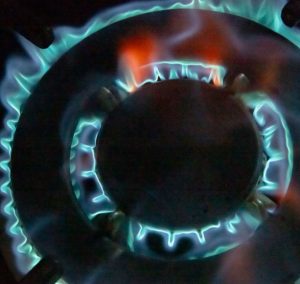If you own a gas stove, you are likely very familiar with the igniter. When turning on this stove, you press down the gas stove igniter, turn it to the desired level of heating and wait for the blue flame to spring out fully formed. When you turn it off, all you do is press the knob down, turn it to its default position, and wait for the blue flames to disappear. For all your time working with a gas stove top, did you ever wonder what exactly happens to allow the igniter to work the way it does? Today we are going to dive into how exactly a gas stove igniter works.
1. What Is A Gas Stove Igniter Made Of?
The first question you might ask about a gas stove igniter is: What is it made of? Traditionally, gas stove igniters are made of silicon carbide. This material, consisting of silicon and carbon, is able to withstand considerably high levels of heat, which is required for a well-functioning gas stove.
2. What Is A Gas Stove Igniter Connected To?
The gas stove igniters are located around the burners at the stovetop. The knobs you turn to ignite the stove are connected to the controller that allows the igniter to turn on and off. The ignition system most commonly found in gas stoves today is the hot surface ignition system.
Hot surface ignition systems consist of an internal oven igniter in addition to the stovetop igniter. When the dial is turned, a current of heat is first stored in the oven igniter. After a sufficient amount of current is stored, it is passed through the gas valves and makes contact with the stovetop igniter, allowing the burners to be set aflame. The igniter allows for current to pass through the stove to safely and effectively light up the burners.
3. Signs That It’s Working
If you currently own and operate a gas stove, you probably want to know how to tell if your igniter is working properly. Two signs that your gas stove igniter is in working order are that you hear a clicking from the dial and see a blue flame. The clicking of the dial indicates that the igniter is able to spark the gas to create a flame. When that flame is blue, it means the igniter is in its best working condition. Technically the gas is not so much burning as it is combusting from the high temperatures required to operate a gas stove and the combusting turning the flame blue means the heat temperature is high as needed.
4. Signs That It Isn’t Working
When determining if your gas stove igniter is experiencing difficulties, you don’t want to assume that the absence of a sign that it’s working is the only way to diagnose a potential problem. Aside from no flame being produced, an igniter producing a yellow or orange flame indicates that the temperature is not reaching the required level. It also means that the fire isn’t burning safely. That means it is time to have the igniter replaced. If the clicking sound is absent when turning the dial, it is also likely a sign that your igniter needs repairing or replacing.
We Provide The Best Stove Services In Pembroke Pines!
Now that you are more knowledgeable about gas stove igniters, you should be better prepared when problems arise. If any problems arise that can be traced to your igniter, the safest thing to do is call a professional appliance technician. If you want the best stove service in Pembroke Pines, contact us to ensure your gas stove igniter is in the best shape possible.


